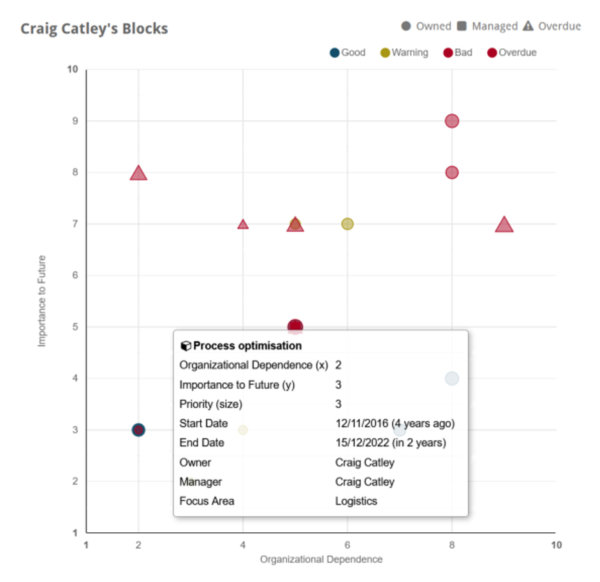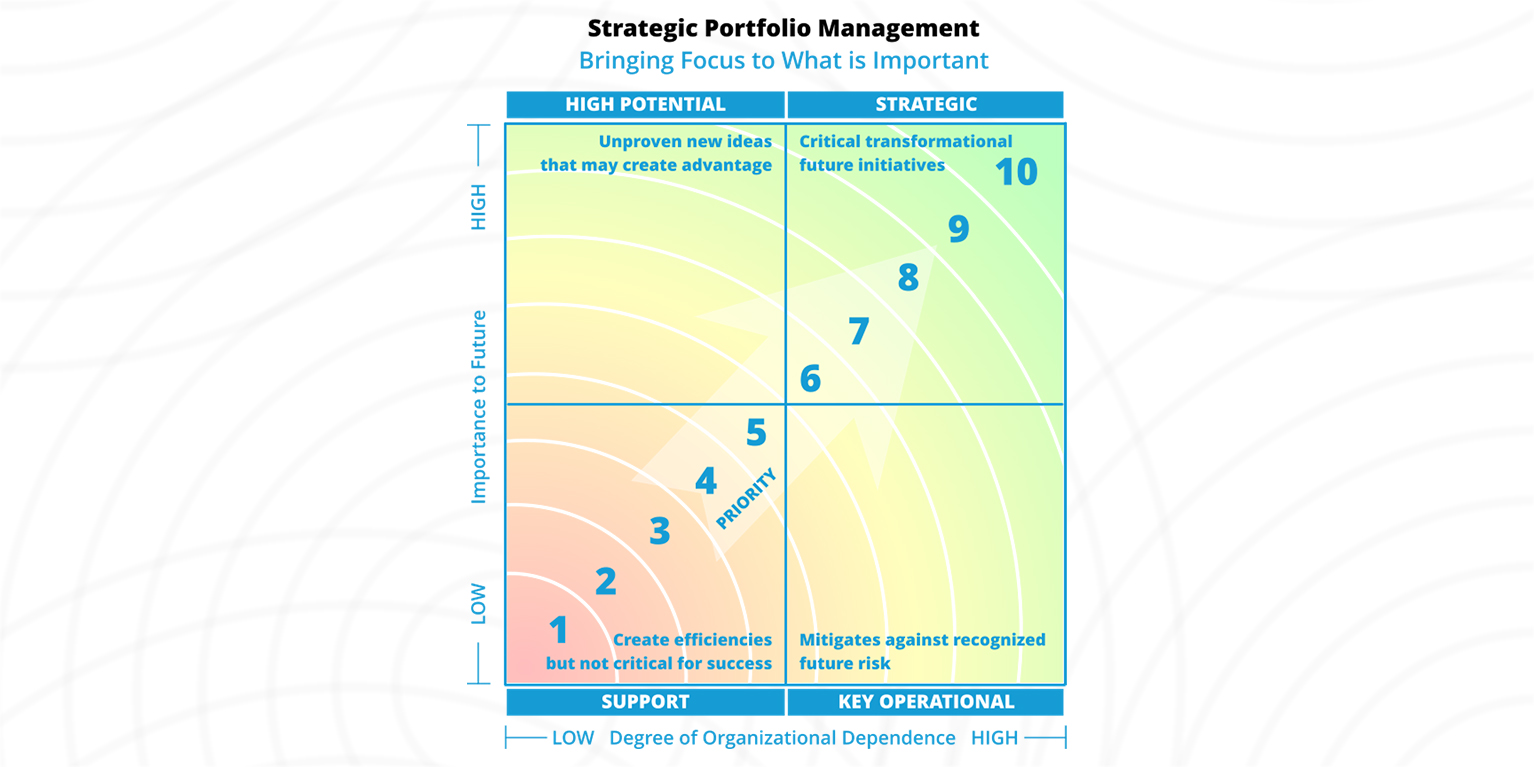Strategic Portfolio Management: The 4 Key Categories of Portfolios
The StrategyBlocks team are giving a lot of thought to the process of categorizing strategic thinking and activity. Through discussions with customers, there seems to be a consistent challenge:
“what work management programs (projects, portfolios, initiatives) should we really be focusing on and investing in … what is truly important”.
It is also a dynamic problem. Something that may seem critical initially may not be as the environment evolves, or a non-critical piece of supporting work is now found to be fundamental to a key business process.
The framework above was adapted from the work of Professor Joe Peppard (HBR,2016). It offers a method to consider the importance of a range of portfolios, specifically designed for digital transformation, but we believe it is very useful for any potential new initiative. I want to explore the use of this framework and then present a method of implementing this approach in StrategyBlocks.
Supporting Portfolios
It is these initiatives that will assist the organization gain efficiencies and savings in a business-as-usual context. These are not in any way strategically critical to the creation of lifetime customer value — they are fundamentally operational. Their worth must be considered as a trade-off against the maximum cost of delivery and the opportunity cost of delivering a more critical piece of work. Therefore they reflect the lowest score for both relative importance and organizational dependence. They are generally things that we would like to do.
Key Operational Portfolios
Where Key Operational initiatives differ from supporting programs of work is that they are aimed at relieving a specific area of business pain by taking immediate action — these are things we need to do. If action is not taken it will expose the organization to a recognized risk and the organization will be disadvantaged in the near term. The importance of these activities may become necessary to continue current levels of value creation. In my local market we have seen a classic example of a key operational project that has affected many (if not all) organizations and that is to gain compliance with Government regulations around accuracy of holiday payments. The cost of these projects must be accepted by the organization.
High Potential Portfolios
Initiatives with high potential are often a product of research and development or ideas captured from inside the organization — they may be those sparks of key insight that may have some transformational value. The key word here is ‘may’. They may, or may not, have the ability to create value for the organization either through productizing intellectual property or fundamentally changing the key business processes. These are things we could do. An important distinction of high potential initiatives is that they are unproven and require an organizational leap of faith through the investment and redirection of resources.
Strategic Portfolios
These initiatives are critical to the transformation of the organization to, at a minimum, maintain their position in the market. They will be recognized as having the key characteristic to generate a competitive advantage and/or offer a product or service to the market that is critical to maintain customer value. Investment in programs of work that fall in this quadrant is a must, and there really is no alternative to direct investment toward these activities. Therefore, these are things we must do.
Implementing Strategic Portfolio Management
The challenge is how to implement the concept of portfolio categorization and prioritization. To bring visibility to what is important, versus what is urgent. In StrategyBlocks each portfolio can be assigned a degree of importance and dependence through the use of numeric custom fields, and every portfolio owned or managed by a user can be plotted from low to high. But StrategyBlocks can add more dimensions to the data. In the chart below, the portfolio owners assessment of priority is displayed by the size of the bubble, the shape illustrates the person’s role, and the color shows if that portfolio is behind delivery target, ahead or in a warning state.

If you would like to learn more about how to implement a system driven approach to portfolio categorization and prioritization, please make contact. We are keen to help.




Leave A Comment